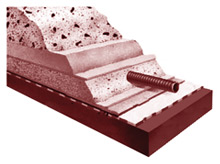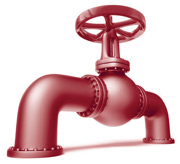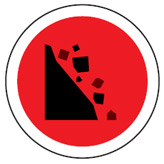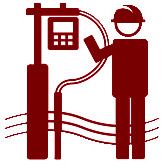How Our Landfills Work
J.P. Mascaro & Sons
continues to use the advances in technology to achieve environmental friendly excellence. Our cutting-edge facilities are designed to promote sustainability and work to enhance our green initiatives. We reuse and recycle foremost and contribute to conservation projects locally and throughout the nation. At the same time, our population will always
create waste that cannot be reused or recycled. We have designed our landfills to successfully manage, treat and
maintain such waste.
We are changing the way you view landfills. Our landfills are the safest places to contain waste that is unable to be reused or recycled. As our population continues to grow so does the amount of waste produced. Our landfills are set up to dispose of this refuse securely and permanently using expertly engineered containment systems. Landfills are essential to keeping community infrastructures intact and strong. Designed to exceed the strict local, state and federal regulations, our landfills use innovative and sophisticated techniques to ensure our society and environment are protected perpetuity. This waste material will be forever held while future generations enjoy the recreation parks each landfill is dedicated to become once they hit capacity.
Landfill Design
The landfills J.P. Mascaro & Sons operate are considered to be sanitary and better for the environment. The cells are excavated, barriers/filters/liners are placed, followed by waste, and a layer of daily cover soil (or alternative method such as tarps) is used to cover at the end of each day. Because of this liner system, pollution from the trash does not seep into the ground and scavenger pests are greatly reduced. This type of landfill is called a Subtitle D Landfill.

A. Liner System
Multiple, engineered layers of geosynthetic liners and natural soil materials underlying the disposal area, and preventing rainfall and other liquids that come in contact with the waste from escaping into the environment and restricting the underground migration of landfill gases. Each geosynthetic layer has a distinct property meant to mimic former methods using natural materials. Geomembranes (HDPE plastic) and Geosynthetic clay liners (GCLs) mimic a thick compacted clay layer. Geocomposites provide drainage characteristics similar to stone and non-woven geotextiles provide cushioning.

B. Cap System
A vegetated cover placed over the landfill at completion of filling, consisting of geosynthetic HDPE plastic liner, geocomposite drainage layer, and natural soil materials. This prevents the escape of landfill gases to the air and restricts the infiltration of rain into the landfill.

C. Gas Management System
A series of extraction wells and piping that removes methane and other decomposition gases from the landfill under vacuum for proper destruction (through burning in flares) and/or reuse (8MW gas to electric plant onsite). The flares were once the primary destruction method, but are now only used at Pioneer for excess gas not able to be used for electric generation.

D. Leachate Management System
A series of pipes placed beneath the waste (and above the liner system) that remove wastewater from the landfill for proper treatment. These are sloped to a low point in the cell (the sump), then pumped out and sent to a 1 million gallon holding tank prior to discharge to a public sewer system.

E. Erosion and Sedimentation Controls
A network of storm water drainage channels and detention ponds which remove rainfall from the surface of the landfill before it comes into contact with the waste and prevents storm water from flowing onto the landfill from surrounding areas.

F. Monitoring Systems
A comprehensive system of environmental monitoring locations and devices to promptly detect releases to air, surface water and groundwater resources. They ensure safety and protection of public health and the environment. Groundwater wells are placed upgradient to compare to downgradient parameters from the landfill to ensure compliance and wastewater containment.
We welcome individuals and groups of all ages to tour our landfills.